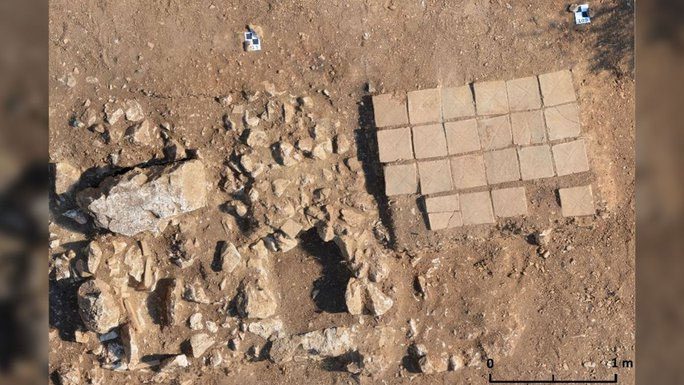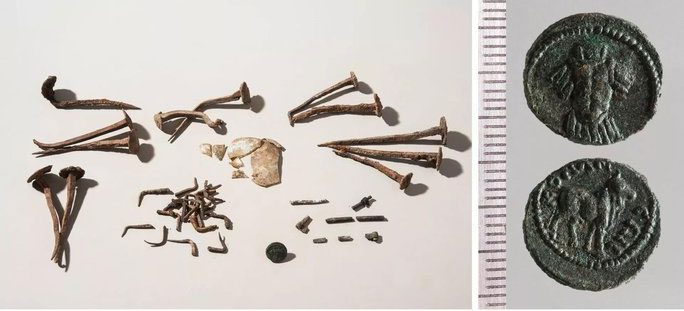An ancient 2,000-year-old tomb with three layers of mysterious “magic” has been discovered at the Roman site of Sagalassos in southwestern Turkey.
According to Live Science, the tomb dates back to around 100-150 AD and is a cremation burial constructed directly on the pyre, featuring a rather ordinary structure.
Initially, it consists of 24 meticulously arranged bricks that research indicates were placed while the pyre was still smoldering. An unusually careful layer of plaster was also applied to seal the ashes of the deceased.

The mysterious ancient tomb at the excavation site – (Photo: KU Leuven).
Most peculiar are the 41 twisted and bent nails, referred to by archaeologists as “death nails,” which were scattered along the edges of the pyre. According to a study published in Antiquity, this tomb belonged to an adult male.
Researcher Johan Claeys from KU Leuven (Belgium) stated: “The burial was concluded not by one, not two, but three different methods, which can be understood as attempts to shield the living from the dead. Or vice versa.”
Although bricks arranged in this manner or plaster that “protects” have been found in some ancient Roman tombs, along with bent fingernails of the deceased, this is the first time archaeologists have discovered a tomb sealed with all three forms of ancient “magic,” representing an ancient fear of the “restless dead.”

The strange nails and coins excavated from the tomb – (Photo: KU Leuven).
Nevertheless, the deceased appears to have been sent off with care, accompanied by various burial goods for daily life, such as a woven basket, food, coins, ceramic vessels, and glass jars…
The archaeological site of Sagalassos has been inhabited from the 5th century BC to the 13th century AD and features interesting examples of Roman architecture, including a theater and a bath complex. The site has been covered by dense vegetation for centuries, which has helped preserve what lies beneath.
As part of the Sagalassos Archaeological Research Project, the tombs on the outskirts of the ancient town have been excavated, including investigations into cases of “non-standard cremation.”


















































